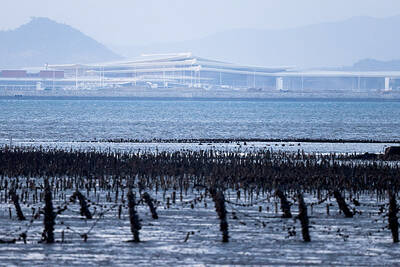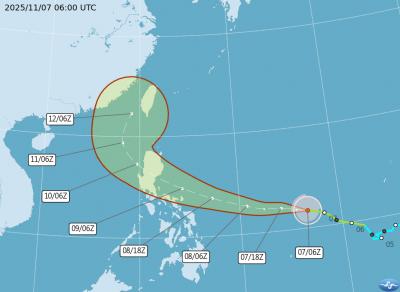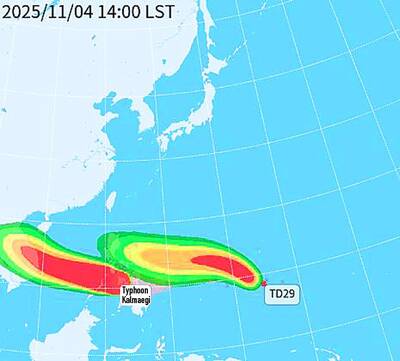US President Barack Obama is playing tough with Beijing and refusing to back down in the escalating conflict over shipping rights in the South China Sea. Obama has upped the ante by sending a heavily armed destroyer into the area.
In the meantime, the Pentagon has made it abundantly clear that despite aggressive harassment from five small Chinese vessels, the USNS Impeccable — a surveillance ship — will continue on its controversial mission to map the ocean floor near the Chinese submarine base on Hainan Island.
It is unclear what action the Hawaii-based destroyer USS Chung-Hoon will take if the Chinese vessels return to harass the Impeccable. But the Pentagon could lose face if the Chung-Hoon, armed with torpedoes and missiles, does not respond to harassment.
Moving between the Impeccable and Chinese boats could however risk a dangerous escalation.
A Pentagon official speaking anonymously because of the sensitivity of the issue said: “Chung-Hoon is there, in the area, keeping an eye on Impeccable, which continues lawful military operations.”
Naval analysts have said over the last few days that the Impeccable has been monitoring Chinese submarine traffic and mapping the seabed. In case of a conflict with China, the surveillance date would help the US find Chinese submarines and destroy them.
The Impeccable’s activities have incensed Beijing, and last Sunday the five small boats turned up to block the ship’s path and came within 7.6m of it, which is considered dangerously close.
The crew of the boats threw pieces of wood in front of the Impeccable and Chinese military planes buzzed the US ship.
Washington protested the incident on Monday directly to Beijing and reinforced its objections during the week in White House and US State Department talks with Chinese Foreign Minister Yang Jiechi (楊潔箎).
China rejected the protests, saying the US ship was conducting illegal surveillance activities in one of China’s exclusive economic zones.
Peter Brookes, a senior analyst with the conservative Heritage Foundation, said: “Beijing claims Impeccable was violating its sovereignty by conducting operations within China’s 200-mile [322km] Exclusive Economic Zone [EEZ] as identified under the United Nations’ 1982 Law of the Sea Treaty.”
“Thing is, the treaty doesn’t give Beijing any right to veto activities outside their 12-mile territorial waters — and Impeccable was more than 60 miles beyond China’s national waters. The treaty gives them a right to object to certain economic activities in their EEZ, such as drilling for oil or gas, or fishing — but that right clearly doesn’t extend to non-economic activities, including military operations, in international waters,” he said.
Brookes said the Obama administration needed to exercise its rights including the right to monitor China’s “secretive and unprecedented military buildup — a significant worry to us and others.”
He said: “Of course, given the White House’s softly-softly approach to international affairs, it’s no wonder the Chinese felt it was time to test our mettle.”
The harassment occurred in the South China Sea about 120km south of Hainan Island.
Walter Lohman, a senior research fellow for Southeast Asia in the Asian Studies Center at the Heritage Foundation, said: “We put our chits on increasing Chinese responsibility in the international community and on climate change; they put theirs on sovereignty over Taiwan and the South China Sea.
“To some well-meaning Americans, international law is a way to peacefully settle conflict. To Chinese diplomats, it’s a tool to assert their pre-existing aggressive claims,” he said.
“What gives?” he said. “Only weeks ago, the Obama administration was heralding resumption of defense talks as the start of a new era in US-China military relations. The problem is that military contacts are an American priority, not a Chinese one.”
“The Chinese are not going to be lured away from their sovereign claims in the South China Sea or anywhere else by indirection or abstraction. Their claims must be challenged, not only by quietly carrying out naval operations in international waters, but explicitly. Observers in the region are well aware of Chinese claims on Taiwan, the South China Sea and Senkakus,” he said.
Officers of the People’s Liberation Army (PLA) are calling the move of the Chung-Hoon into the South China Sea “an inappropriate reaction.”
One Chinese naval source said that the PLA had taken note of the latest US move and was “watching developments closely.”

Three Taiwanese airlines have prohibited passengers from packing Bluetooth earbuds and their charger cases in checked luggage. EVA Air and Uni Air said that Bluetooth earbuds and charger cases are categorized as portable electronic devices, which should be switched off if they are placed in checked luggage based on international aviation safety regulations. They must not be in standby or sleep mode. However, as charging would continue when earbuds are placed in the charger cases, which would contravene international aviation regulations, their cases must be carried as hand luggage, they said. Tigerair Taiwan said that earbud charger cases are equipped

UNILATERAL MOVES: Officials have raised concerns that Beijing could try to exert economic control over Kinmen in a key development plan next year The Civil Aviation Administration (CAA) yesterday said that China has so far failed to provide any information about a new airport expected to open next year that is less than 10km from a Taiwanese airport, raising flight safety concerns. Xiamen Xiangan International Airport is only about 3km at its closest point from the islands in Kinmen County — the scene of on-off fighting during the Cold War — and construction work can be seen and heard clearly from the Taiwan side. In a written statement sent to Reuters, the CAA said that airports close to each other need detailed advanced

Tropical Storm Fung-Wong would likely strengthen into a typhoon later today as it continues moving westward across the Pacific before heading in Taiwan’s direction next week, the Central Weather Administration (CWA) said. As of 8am, Fung-Wong was about 2,190km east-southeast of Cape Oluanpi (鵝鑾鼻), Taiwan’s southernmost point, moving westward at 25kph and possibly accelerating to 31kph, CWA data showed. The tropical storm is currently over waters east of the Philippines and still far from Taiwan, CWA forecaster Tseng Chao-cheng (曾昭誠) said, adding that it could likely strengthen into a typhoon later in the day. It is forecast to reach the South China Sea

WEATHER Typhoon forming: CWA A tropical depression is expected to form into a typhoon as early as today, the Central Weather Administration (CWA) said yesterday, adding that the storm’s path remains uncertain. Before the weekend, it would move toward the Philippines, the agency said. Some time around Monday next week, it might reach a turning point, either veering north toward waters east of Taiwan or continuing westward across the Philippines, the CWA said. Meanwhile, the eye of Typhoon Kalmaegi was 1,310km south-southeast of Oluanpi (鵝鑾鼻), Taiwan’s southernmost point, as of 2am yesterday, it said. The storm is forecast to move through central